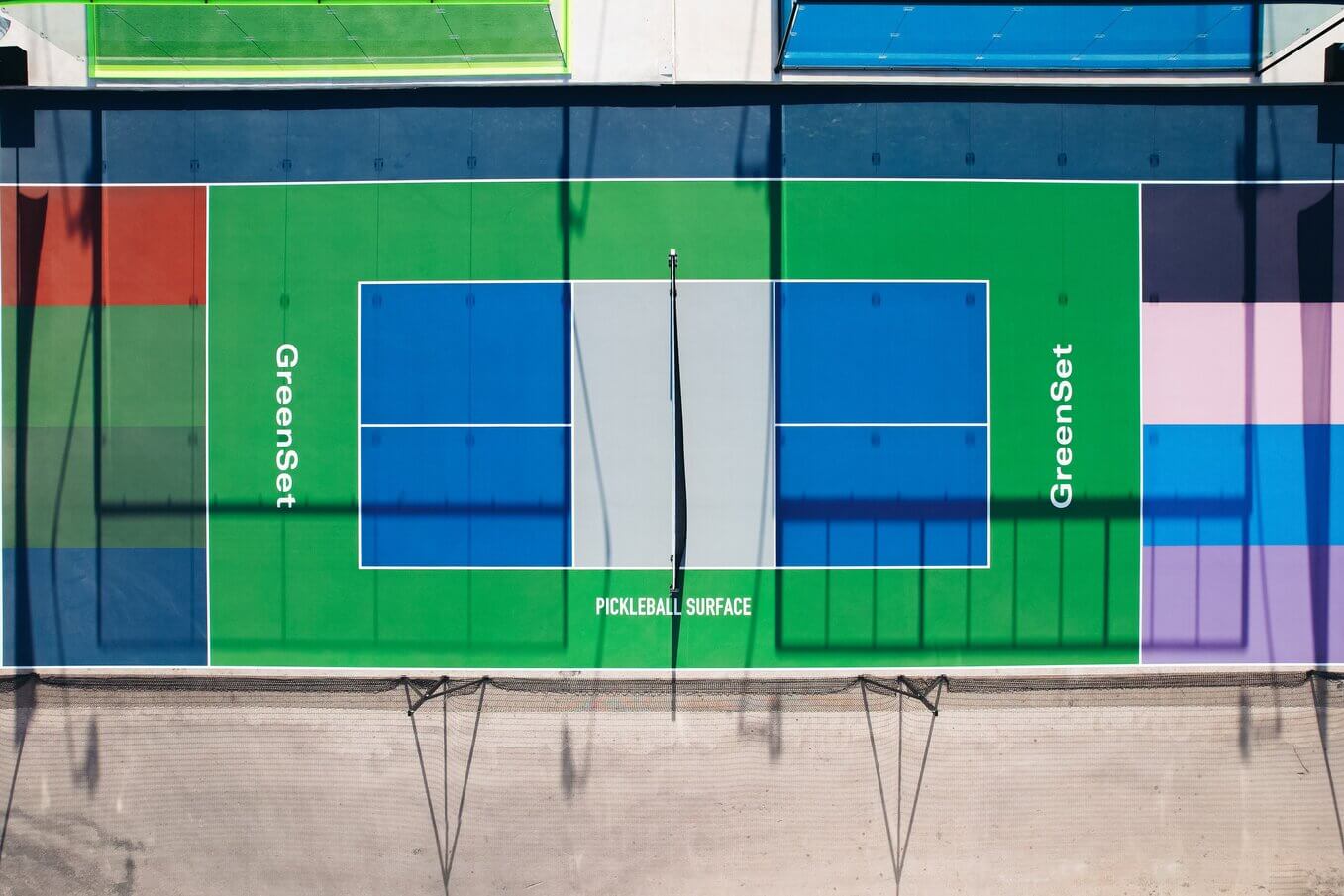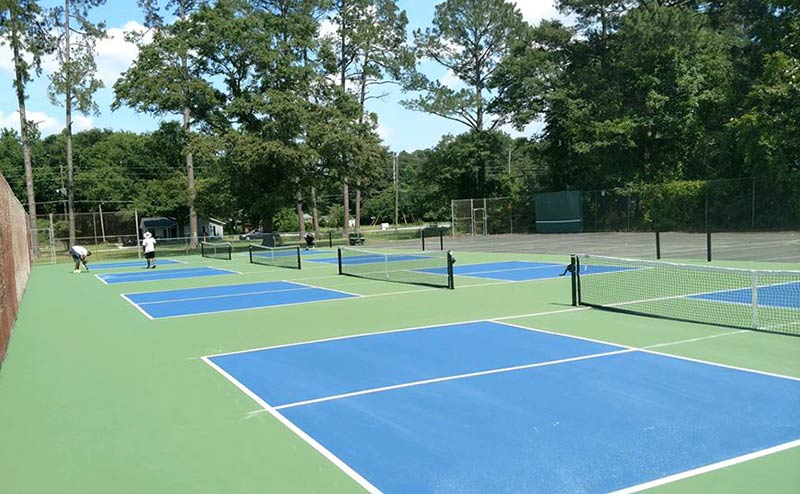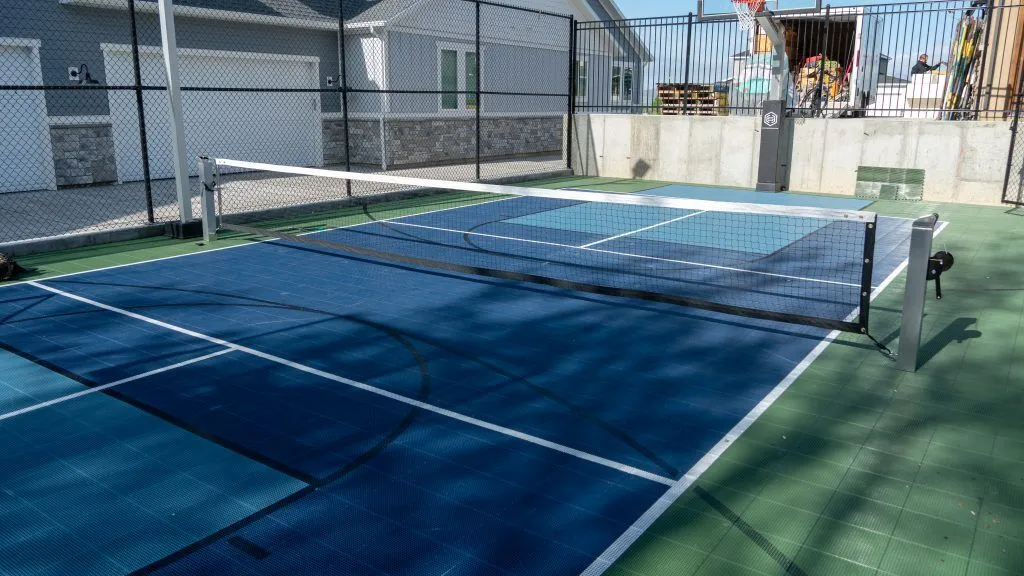Pickleball Court Construction-- Essential Tips for a Sturdy Court
Pickleball Court Construction-- Essential Tips for a Sturdy Court
Blog Article
Lasting Practices in Pickleball Court Construction You Need To Know
As the popularity of pickleball continues to increase, so also does the demand for lasting techniques in court building and construction. This strategy not just addresses ecological concerns yet additionally enhances the durability and performance of the courts. From choosing environment-friendly materials to implementing reliable drain and energy-saving lights solutions, there are numerous techniques to think about. Yet, the effect of these techniques extends far past the court itself. Comprehending how each component adds to an extra sustainable future welcomes additionally exploration right into the detailed balance in between recreational growth and ecological stewardship.
Picking Eco-Friendly Products
Picking environment-friendly products is an essential action in the building of sustainable pickleball courts. The choice of lasting materials not just reduces ecological impact but also improves the long life and efficiency of the court. Trick products consist of recycled rubber for the surface area, which supplies superb resilience and shock absorption while diverting waste from land fills.
In addition, making use of in your area sourced materials reduces transportation discharges and sustains regional economies. Pickleball court construction. Using native woods for fence and seats can provide a sustainable visual while making sure strength against the elements.
Integrating absorptive materials for court structures can better contribute to sustainability by permitting natural water drainage and lowering runoff. These options not just secure neighborhood environments but also promote healthier play atmospheres.
Reliable Drain Solutions
While the selection of environmentally friendly materials is crucial, implementing efficient drain options is equally crucial for maintaining lasting pickleball courts. Appropriate drainage not just secures the court surface area from water damages however likewise decreases erosion and drainage, advertising environmental stability.
Efficient drainage systems can consist of permeable paving, which allows water to infiltrate the ground instead of pooling on the surface area. This lowers the possibility of standing water, which can lead to mold and mildew and other upkeep concerns. Additionally, including tactically placed drain networks and swales can route excess water far from the court location, making sure a dry having fun surface area and protecting against dirt erosion.
Utilizing indigenous plants in the landscape design around the courts can additionally improve drainage by soaking up excess water and decreasing drainage. These plants require less watering and advertise biodiversity, straightening with sustainable techniques.
Additionally, it is critical to routinely preserve the drainage system to guarantee its lasting effectiveness. This includes cleaning particles and surveillance for clogs. By focusing on efficient water drainage solutions, pickleball court constructors can considerably add to the sustainability and long life of the center, ultimately benefiting both players and the atmosphere.
Energy-Efficient Illumination Options
As the need for pickleball proceeds to expand, incorporating energy-efficient lights alternatives right into court style has actually come to be increasingly crucial for sustainability. Traditional illumination systems frequently take in extreme power, adding to greater operational expenses and environmental impact. Consequently, embracing modern-day, energy-efficient technologies is important for both brand-new buildings and renovations.
LED (Light Emitting Diode) lights sticks out as a premier choice because of its longevity and energy cost savings (Pickleball court construction). Contrasted to traditional lights, LEDs use around 75% less power and can last up to 25 times longer, considerably decreasing maintenance expenses. Moreover, the directional nature of LED lights lessens light air pollution, ensuring that lighting is concentrated on the court as opposed to surrounding locations.

Sustainable Surface Alternatives
Discovering sustainable additional info surface alternatives for pickleball courts has actually gotten traction among players and contractors alike. The focus on environment-friendly materials not only aligns with the expanding environmental recognition however likewise enhances the efficiency and durability of the courts.
This product provides exceptional shock absorption, reducing the threat check it out of injuries for players while promoting sustainability. These tiles are simple to set up and change, and their versatility permits for numerous court arrangements.
All-natural lawn courts are additionally arising as a lasting option, advertising biodiversity and decreasing the heat island effect. They need routine upkeep and water, which might not line up with all sustainability goals.

Water Conservation Techniques

An additional effective strategy includes the installment of over at this website rainwater harvesting systems. These systems save and collect rain for use in keeping court surfaces and landscape design. This approach not only preserves potable water but additionally minimizes dependence on community resources.
In addition, utilizing drought-resistant landscape design around the courts is crucial. Native plants call for less water and are much better adjusted to local environment problems, hence decreasing overall water intake. Additionally, making use of reliable watering systems, such as drip irrigation, makes sure that water is supplied directly to plant roots, reducing evaporation and waste.
Verdict
Integrating lasting practices in pickleball court building substantially adds to ecological preservation and resource effectiveness. By focusing on these techniques, the building of pickleball courts can align with wider ecological goals while promoting longevity and capability within areas.
As the appeal of pickleball continues to increase, so also does the requirement for sustainable methods in court building.Selecting environment-friendly materials is a vital action in the building and construction of lasting pickleball courts. By focusing on energy-efficient illumination choices, pickleball court constructors can add to an extra lasting future while satisfying the requirements of stakeholders and gamers alike.Integrating sustainable surface area options not only enhances the performance of pickleball courts yet also leads the method for carrying out efficient water preservation methods.Integrating lasting methods in pickleball court building significantly adds to ecological preservation and source effectiveness.
Report this page